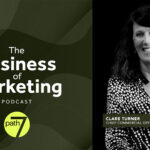By Tom Gunter, Co Founder & Head of New Markets, Avid Collective
Digital advertising celebrated its 30th anniversary at the end of last year, prompting an opportune moment for introspection. Over three decades, we’ve witnessed remarkable innovation, yet the digital advertising landscape is increasingly marked by consumer dissatisfaction. With two-thirds of consumers finding ads intrusive, excessive, or irrelevant, and $100 billion in ad spend wasted on ineffective ads in 2023 alone, the industry faces a tipping point.
As brands start implementing strategies for 2025, it’s time to reevaluate their strategies for meaningful engagement, and for publishers to seize the opportunity to reassert their unique value in a crowded market. Ad fatigue is real, but it’s not insurmountable. By shifting focus from intrusive ads to collaborative, high-quality branded content, publishers and brands can redefine consumer engagement and reclaim market share.
A saturated market with declining returns
By the end of 2024, global ad spend was expected to reach $1 trillion for the first time. Yet, the outlook for publishers remains challenging. Over 51% of this spend was claimed by the “Big Five” tech giants—Alphabet, Meta, ByteDance, Alibaba, and Amazon—leaving content media owners with a modest 27.2% slice. This imbalance is exacerbated by emerging players such as Netflix Ads and retail media networks vying for ad budgets.
The disproportionate allocation of spend underscores a pressing issue: publishers are not only competing against each other but are also losing ground to platforms that commoditise digital advertising. In Q3 2024, only 30% of respondents to the UK’s Digital Publishers’ Revenue Index reported growth; the Index also showed an ongoing decline in display advertising as a revenue stream for digital publishers, with an 11.4% decrease during that quarter. This intensifies the need for publishers to communicate the distinct advantages of their offerings, particularly branded content, which provides more sustainable value.
The ineffectiveness of intrusive advertising
Intrusive ads—whether pre-roll videos, banner ads, or pop-ups—interrupt user experiences, contributing to consumer fatigue and diminishing trust in brands. The statistics are stark:
- Low engagement: Most display ads capture less than one second of active attention, whereas ads need at least 2.5 seconds to be effective.
- Eroded trust: Advertising ranks among the least trusted institutions globally.
- Relevance issues: Over 30% of internet users, and 66% of advertisers themselves, employ ad blockers, underscoring frustration with irrelevant content.
In this environment, traditional ad formats are failing to achieve meaningful brand engagement. By contrast, branded content can offer a non-intrusive, opt-in alternative that resonates more deeply with audiences.
A path to meaningful engagement
Branded content represents a unique opportunity for publishers to leverage their trusted platforms and storytelling expertise. Unlike disruptive ads, branded content is seamlessly integrated into a publisher’s environment, enhancing the audience experience rather than detracting from it. Formats range from long-form articles to video integrations, all designed to engage rather than interrupt.
Notably, branded content outperforms traditional formats in fostering active attention. For instance, audiences spend minutes engaging with high-quality branded articles or videos, compared to fleeting seconds on display ads. This level of engagement translates to stronger brand lift, showing up to three times greater impact than traditional ads, and longer-lasting effects on consumer perception.
Consider the success of a campaign for Kellanova’s Coco Pops, which transformed the cereal from a breakfast staple to a versatile ingredient through high-quality branded content. Partnering with publishers like Marion’s Kitchen and Urban List, the campaign achieved over 1.5 million video views and 146,000 article views, far outperforming traditional ad benchmarks. By tapping into active attention, nostalgia, and cultural relevance, the campaign created authentic connections with audiences.
Why branded content works
Branded content succeeds where traditional advertising falls short by addressing key limitations:
- Active attention: Branded content holds consumer attention for extended periods, driving deeper engagement. For example, articles and videos can sustain attention for minutes rather than seconds.
- Trust: Publishers have built credibility with their audiences—being trusted 15 times more than traditional digital channels—which transfers to the brands they endorse. Content produced by respected journalists or creators fosters authenticity and consumer confidence.
- Relevance: By aligning content with audience interests and timing, which significantly impacts purchase decisions, publishers can deliver messages that resonate and drive action.
- Education: Branded content allows for in-depth storytelling, helping brands communicate complex messages in an engaging way.
- Emotional connection: Human-centered stories and nostalgic themes create lasting impressions and brand loyalty.
These unique benefits create a compelling case for advertisers to shift more investment toward branded content. A modest increase in global branded content spend—from 1% to just 2% or 3%—could drive billions of dollars in additional revenue for publishers, transforming the landscape.
A collaborative future for brands and publishers
To realise the full potential of branded content, publishers must champion its unique benefits and advocate for increased investment from advertisers. Collaboration among publishers can amplify these efforts, enabling them to present a united front that emphasises the value of quality content.
Advertisers, in turn, must rethink their approach to branded content, viewing it as a strategic investment rather than a line-item cost. By integrating branded content into their media mix, brands can align campaign messaging, drive strong uplift, and achieve scale, with outcomes that can be stronger than most programmatic channels.
The future of advertising lies in meaningful engagement, and branded content is the key to unlocking it. By embracing innovative formats and leveraging the trust they’ve built with audiences, publishers can reclaim their position as essential partners for brands. For advertisers, the message is clear: working with publishers to create authentic, engaging content is not just an alternative to intrusive ads—it’s a necessity in an era of ad fatigue. As we move into 2025, the opportunity to reshape the industry is within reach. Together, brands and publishers can turn challenges into growth, delivering value for advertisers and consumers alike.







